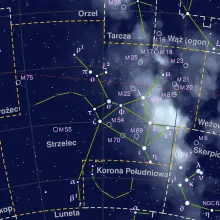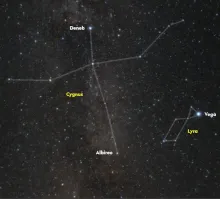Constellation Delphinus
Delphinus, the Dolphin, is a small but distinctive constellation located in the northern sky. It is one of the 48 constellations listed by the 2nd-century astronomer Ptolemy and remains one of the 88 modern constellations. Despite its size, Delphinus is easily recognizable due to its unique shape, which resembles a dolphin leaping out of the water.







